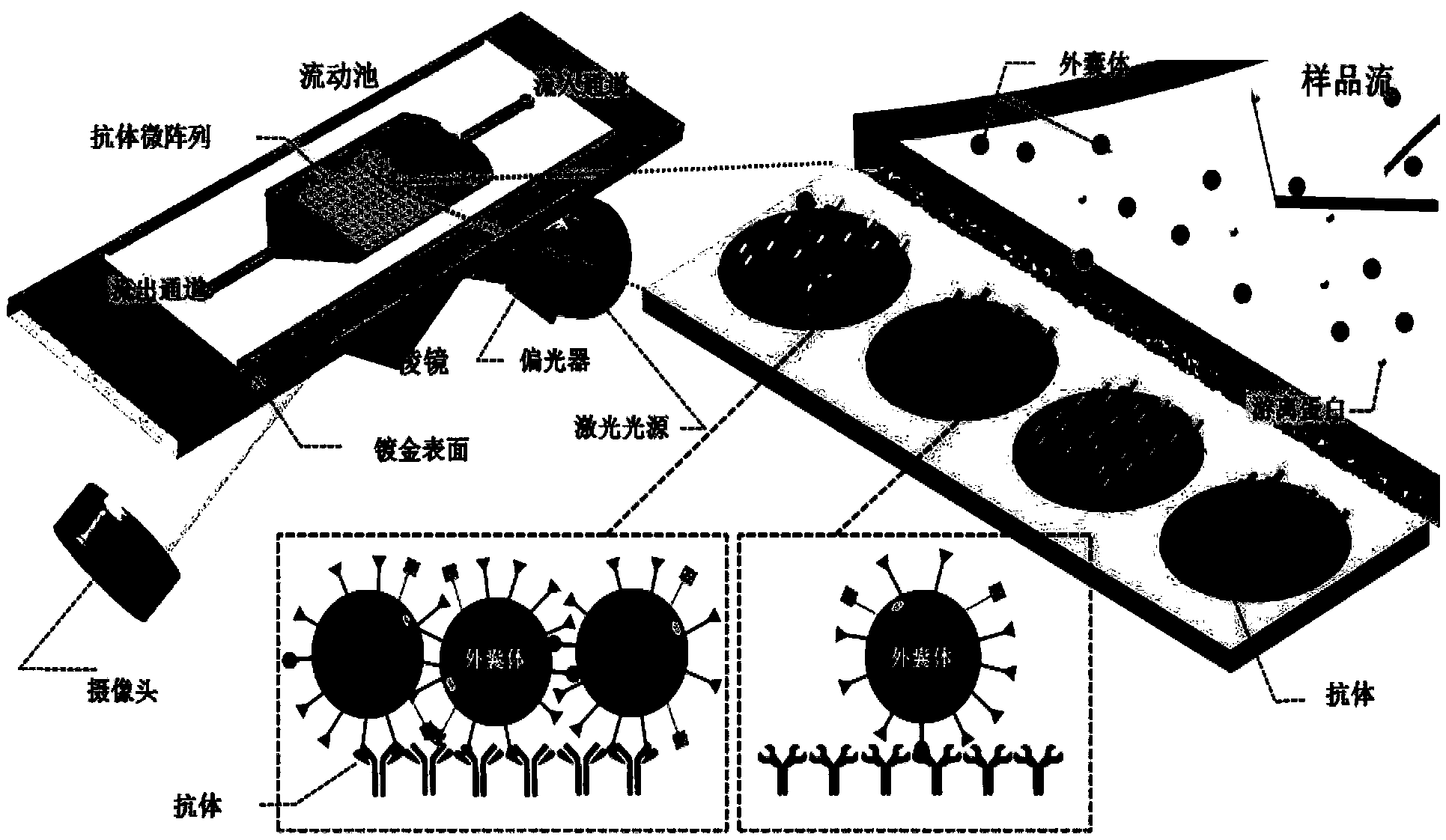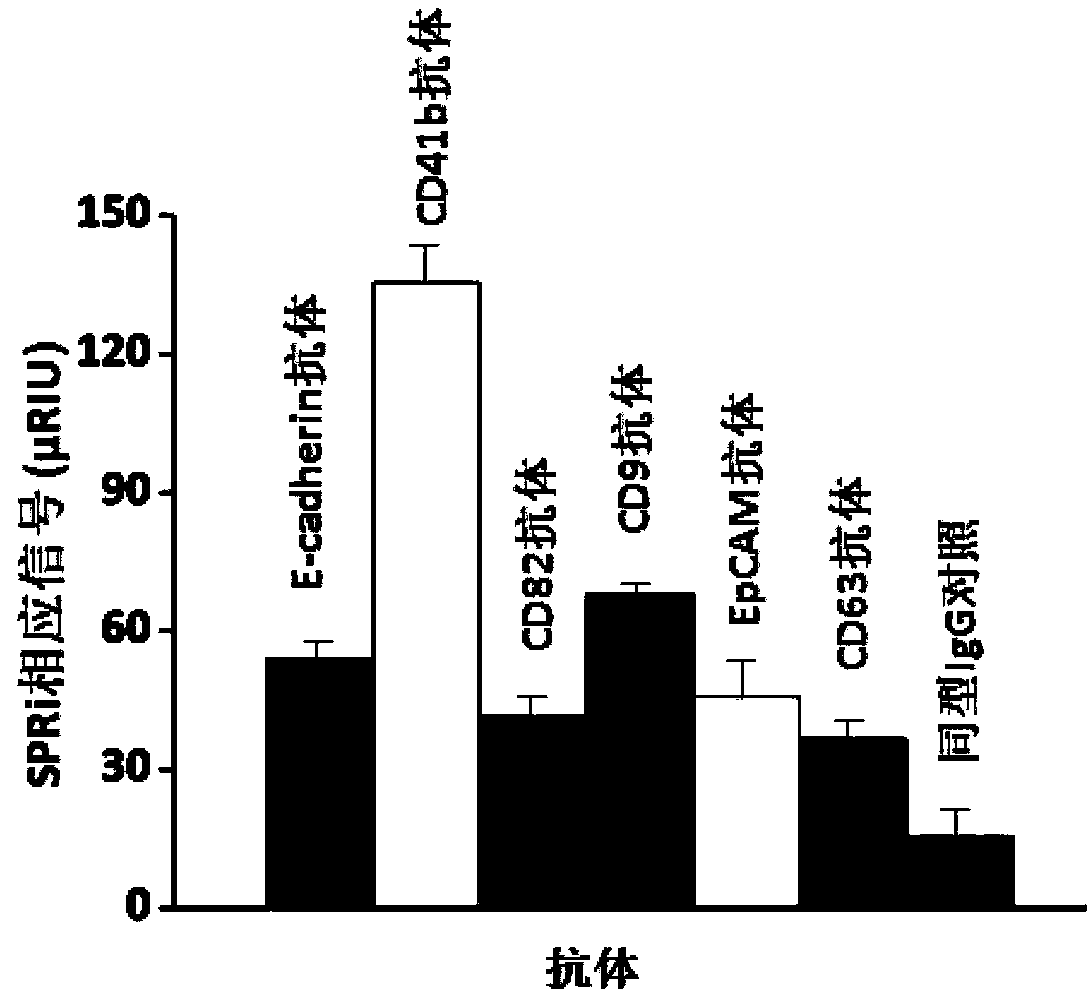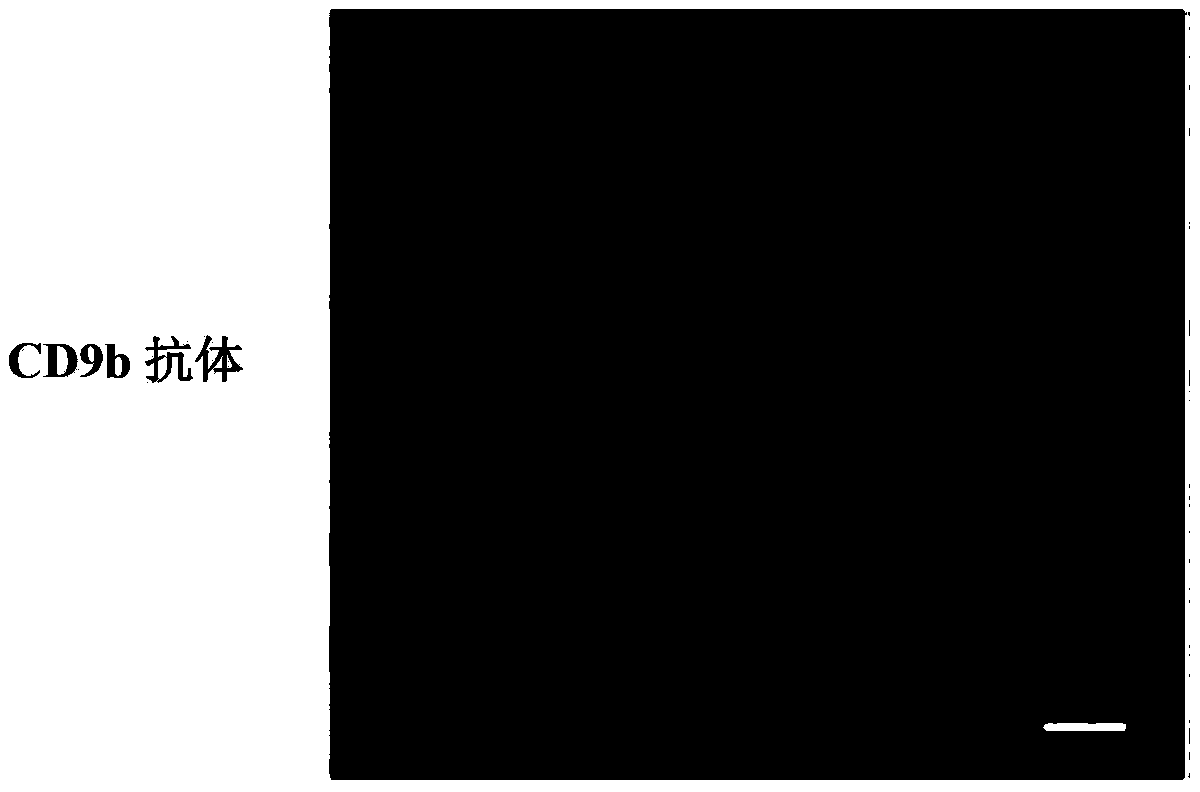Method for detecting external capsule bodies in liquid sample
A technology of liquid samples and exocysts, which is applied in the direction of measuring devices, scattering characteristics measurement, instruments, etc., can solve the problems of negative impact on the credibility of test results, labeling technology increases the background noise of non-specific interaction detection, etc.
- Summary
- Abstract
- Description
- Claims
- Application Information
AI Technical Summary
Problems solved by technology
Method used
Image
Examples
preparation example Construction
[0020] The preparation method of the microarray chip loaded with exosome surface membrane protein specific antibody according to the present invention can be according to the literature (Lausted, C.; Hu, Z.; Hood, L.; Campbell, C.T. Comb Chem High Throughput Screen 2009 , 12, (8), 741-51.), preferably, the preparation process may include the following steps:
[0021] Printing: Print one or more specific antibodies to exocyst surface membrane proteins at a concentration of 0.1-10 μg / μL on a chip coated with a metal layer on the surface to form an antibody microarray. The chip can be a gold-plated chip or a silver-plated chip commonly used in SPRi technology. The size of the chip can be the size conventionally used in the art. Generally, the printing density of antibodies on the chip per square centimeter is 1-10000 dots, preferably 1-100 dots. In terms of protein amount, each The amount of antibody in the antibody spot is 0.02-2 μg, preferably 0.1-1 μg. After printing, place ...
preparation example 1
[0056] This preparation example is used to illustrate the preparation method of the microarray chip provided by the present invention. In this preparation example, the same microarray chips 1-6 are prepared for subsequent test examples. The specific preparation steps are:
[0057] (1) Printing: Mouse anti-CD63 IgG, mouse anti-CD9 IgG, mouse anti-CD41b IgG, mouse anti-E-cadherin IgG, mouse anti-EpCAM IgG, mouse anti-CD82 IgG and the control group IgG at a concentration of 5 μg / μL at 5000 cells / cm 2 The printing density was fixed to the surface of the plasmon resonance imaging gold-plated chip modified by polyethylene glycol to form an antibody microarray, and one spot was printed for each antibody (the amount of protein in each spot was 0.5 μg), and the microarray chip was placed Incubate at 40°C for 2 hours in a humid box with a humidity of 50%;
[0058] (2) Cleaning: Wash the chip with 100ml of 1M high-fold phosphate buffer, 100ml of 0.1M low-fold phosphate buffer and 200ml ...
PUM
| Property | Measurement | Unit |
|---|---|---|
| diameter | aaaaa | aaaaa |
| diameter | aaaaa | aaaaa |
Abstract
Description
Claims
Application Information
 Login to View More
Login to View More - R&D
- Intellectual Property
- Life Sciences
- Materials
- Tech Scout
- Unparalleled Data Quality
- Higher Quality Content
- 60% Fewer Hallucinations
Browse by: Latest US Patents, China's latest patents, Technical Efficacy Thesaurus, Application Domain, Technology Topic, Popular Technical Reports.
© 2025 PatSnap. All rights reserved.Legal|Privacy policy|Modern Slavery Act Transparency Statement|Sitemap|About US| Contact US: help@patsnap.com



